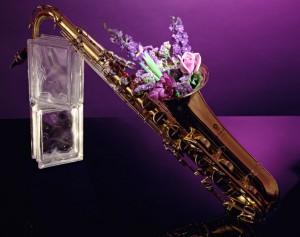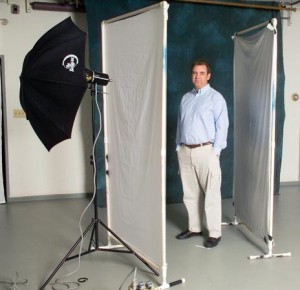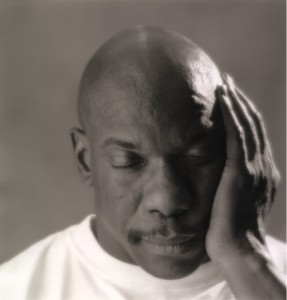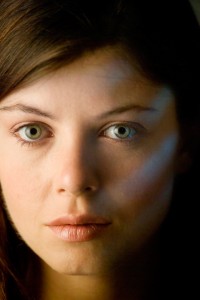
Purple Sax
This is basic stuff on lighting. I am going to send some of it out to refresh my students in my new Commercial Photography class at BetterPhoto.
I find that many people decide to avoid working with strobes because they do not understand them. In my experience most people cannot understand strobes until they work with some kind of a light. Even in live classes where there is demonstration in front of the students, many will not understand strobes. But when someone sets up the lights, for themselves, and does a shot, perfects the exposure, and creates a photograph all becomes clear. This is why I have students use cheap clamp lights in my class An Introduction To Photographic Lighting . So the best way to learn lighting, as with so many things is practice.
There are two and a half important things about any light source: Color; the size and distance of the light source relative to the size of the subject or the product; and, finally the direction of the light is half important. While a digital camera can control color it doesn’t have the ability to adjust two different colors of light in the same shot. If we want to work with a yellow light like tungsten and a blue light like daylight we have to use filters over one of the light sources to make it match. A filter over the camera won’t fix this. The size of the light source affects the transition from light to shadow. A big light will have softer shadowing than a small light. Consider the light on a sunny day where the light comes from a very small part of the sky and an overcast day where light comes from everywhere. There aren’t any shadows on an overcast day, are there? Finally the position of a small light source is critical since it defines where the highlights and shadows are, but with a big light source position is less important. It doesn’t matter, in terms of shadowing, where a subject stands on an overcast day.
One of the things that confuses people about large light modifiers is that they think the purpose is to spread the light over a larger area. Actually you can spread light over a large area just be changing the reflector or leaving it off. The reason we use these modifiers is to soften the quality of light. A large light modifier lights each point on the subject from each point on the modifier. This means that an area of the subject that wouldn’t be lit by a small light source is often lit by a part of a larger light source, so an area that would be in shadow is merely darker.
The reflections from a large light source are a bigger problem than the reflections from small sources. Of course this is because of the size. Before Photoshop controlling these reflections was very important, often it made the choice of which tool to use. Before Photoshop retouching a reflection was difficult and expensive. This is the biggest reason why soft boxes became popular. Now it is pretty easy to retouch. Reflections of the light source are much more of a problem in product photography than in portrait photography. The spherical shape of the eye tends to make reflections smaller, where a product will often show larger reflections.
Finally photography is both a craft and an art. In order to improve your craft you will need to practice. You will also take bad pictures in pursuit of good pictures. Something to keep in mind, even Eric Clapton and Luciano Pavarotti practiced.

Light and lens make this shot effective.
I think that lighting is the most important skill I can teach a photographer, first because there are relatively few people who teach this skill. Also because it gives you control over your photographs that no other skill, even mastery of Photoshop, can give you. I approach teaching this skill from a flexible and technical point of view, if those two things are not incompatible. Flexible, because I don’t think that lighting formulas are the most effective way of approaching lighting. Technical, because I believe that lighting is a skill that is dependent on using tools effectively. While I have heard it said, “A workman is only as good as his tools,” the opposite is often said about photographers: he/she could make good pictures with any camera. I think that statement is basically stupid. I have enjoyed the work of many photographers over the years, and they have always been excellent at craft as well as people of great vision. I do try to show examples and explain how I did them. This seems like a reasonable way to approach teaching online to me. You may also want to check out my class Portrait Photography Lighting On Location And In The Studio .
Classes start on July 1, but you can join as late as July 6, and of course there is always next month!
Thanks, John Siskin

Wow, this is in every rpseect what I needed to know.
Comment by Digger — July 2, 2011 @ 3:00 pm